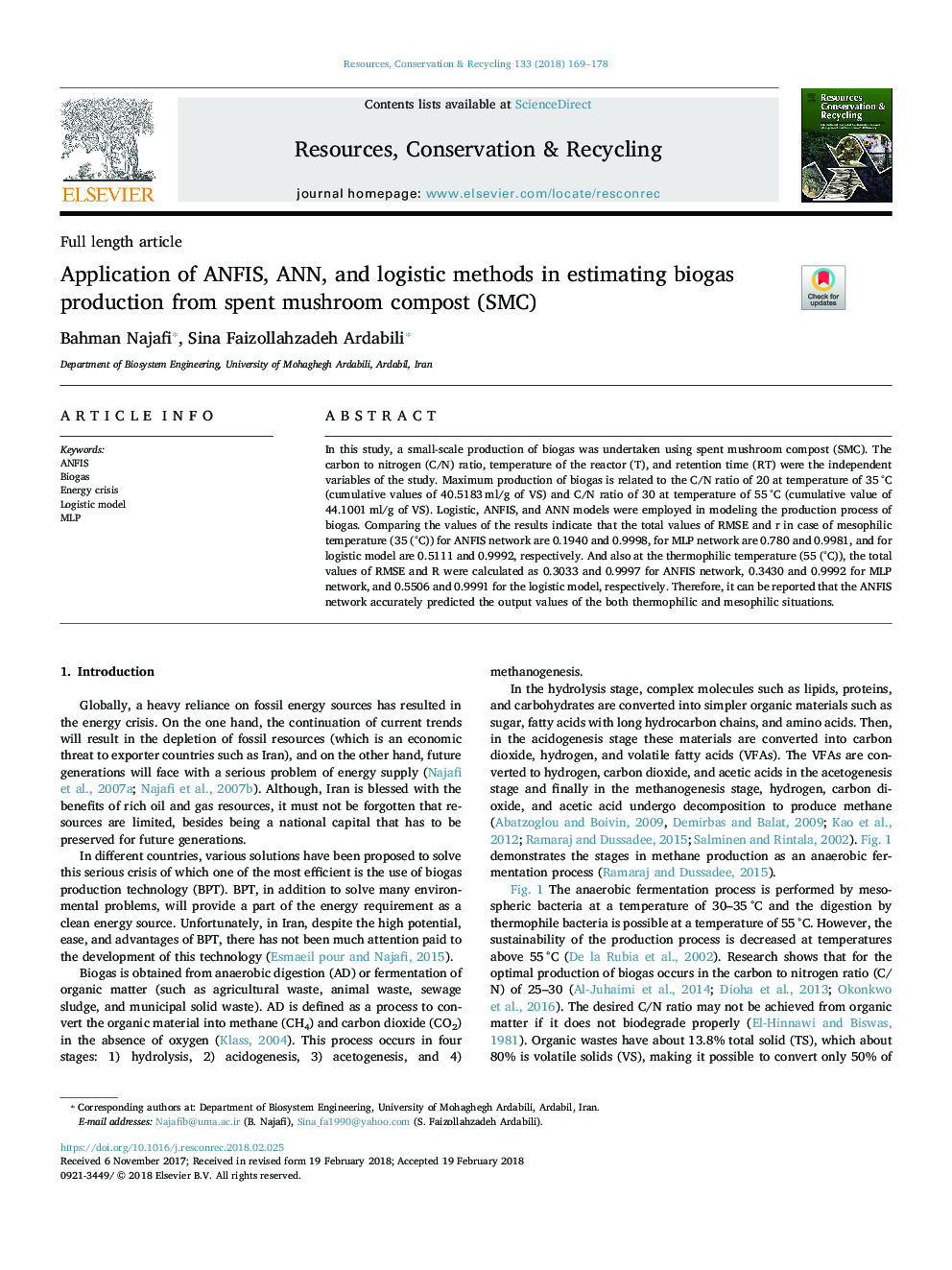| Article ID | Journal | Published Year | Pages | File Type |
|---|---|---|---|---|
| 7494267 | Resources, Conservation and Recycling | 2018 | 10 Pages |
Abstract
In this study, a small-scale production of biogas was undertaken using spent mushroom compost (SMC). The carbon to nitrogen (C/N) ratio, temperature of the reactor (T), and retention time (RT) were the independent variables of the study. Maximum production of biogas is related to the C/N ratio of 20 at temperature of 35â¯Â°C (cumulative values of 40.5183â¯ml/g of VS) and C/N ratio of 30 at temperature of 55â¯Â°C (cumulative value of 44.1001â¯ml/g of VS). Logistic, ANFIS, and ANN models were employed in modeling the production process of biogas. Comparing the values of the results indicate that the total values of RMSE and r in case of mesophilic temperature (35 (°C)) for ANFIS network are 0.1940 and 0.9998, for MLP network are 0.780 and 0.9981, and for logistic model are 0.5111 and 0.9992, respectively. And also at the thermophilic temperature (55 (°C)), the total values of RMSE and R were calculated as 0.3033 and 0.9997 for ANFIS network, 0.3430 and 0.9992 for MLP network, and 0.5506 and 0.9991 for the logistic model, respectively. Therefore, it can be reported that the ANFIS network accurately predicted the output values of the both thermophilic and mesophilic situations.
Related Topics
Physical Sciences and Engineering
Energy
Renewable Energy, Sustainability and the Environment
Authors
Bahman Najafi, Sina Faizollahzadeh Ardabili,
